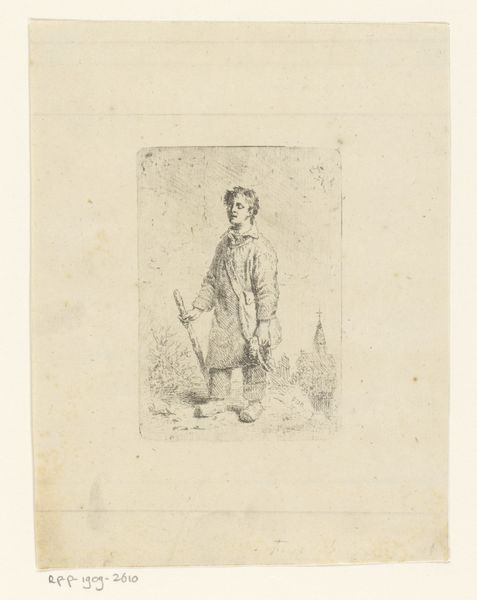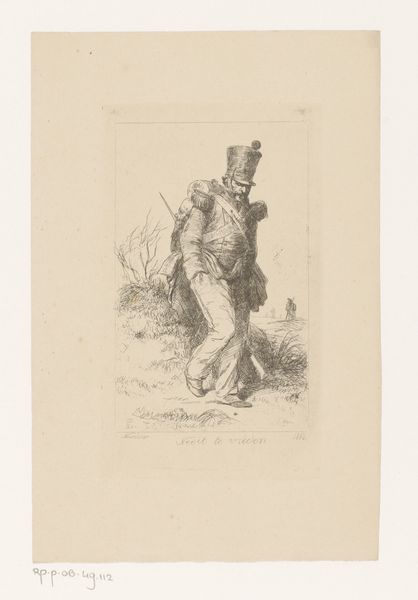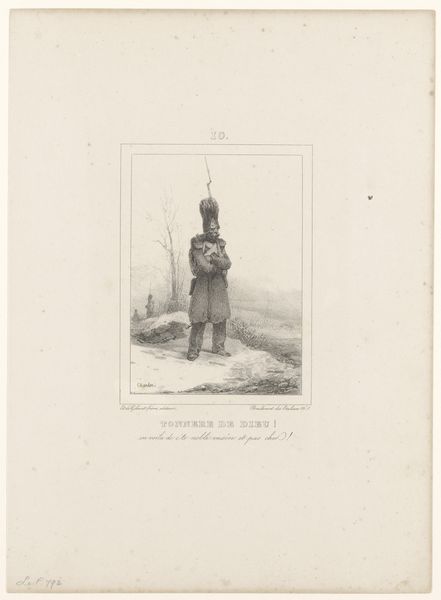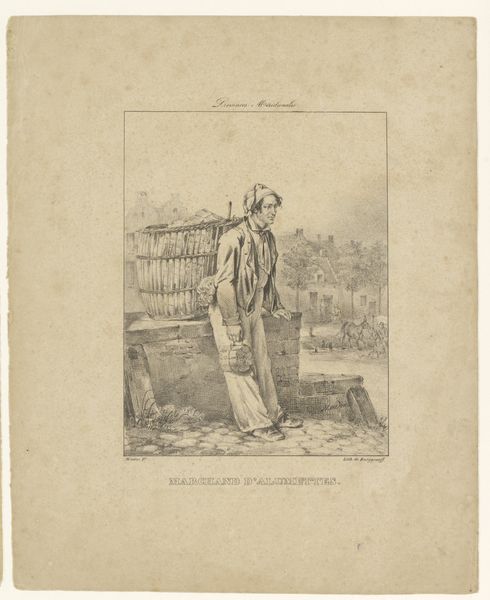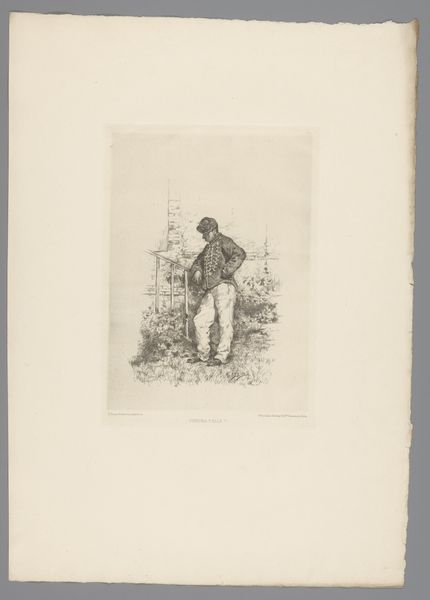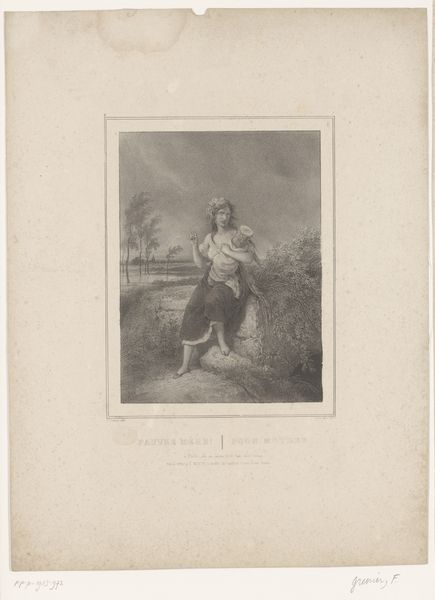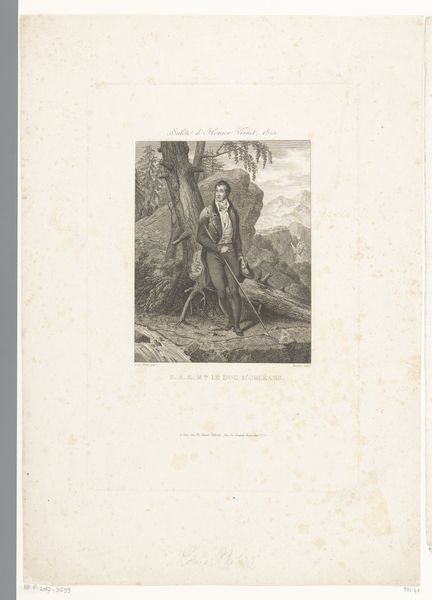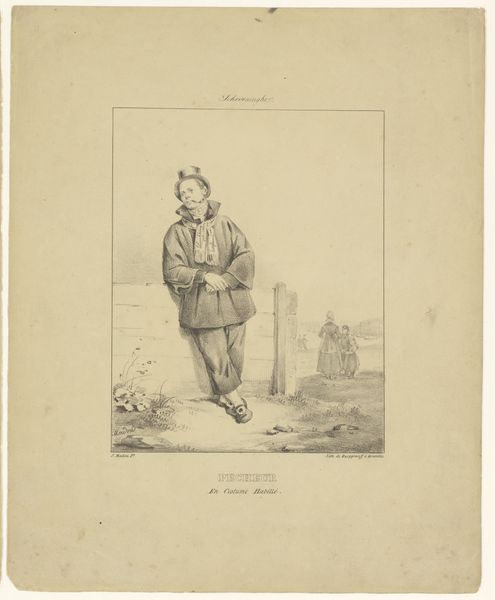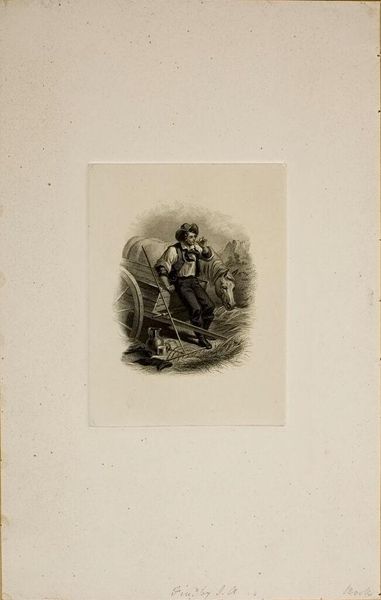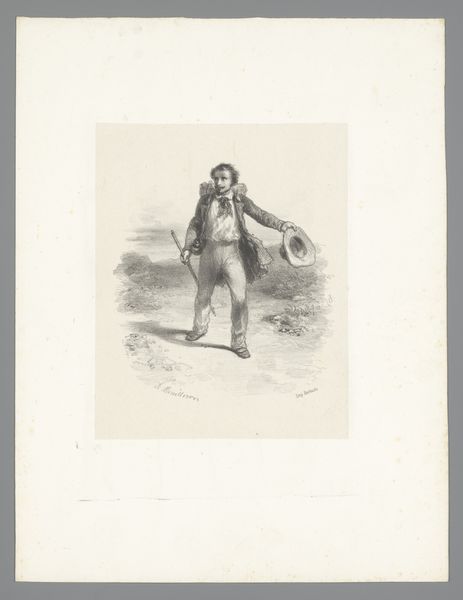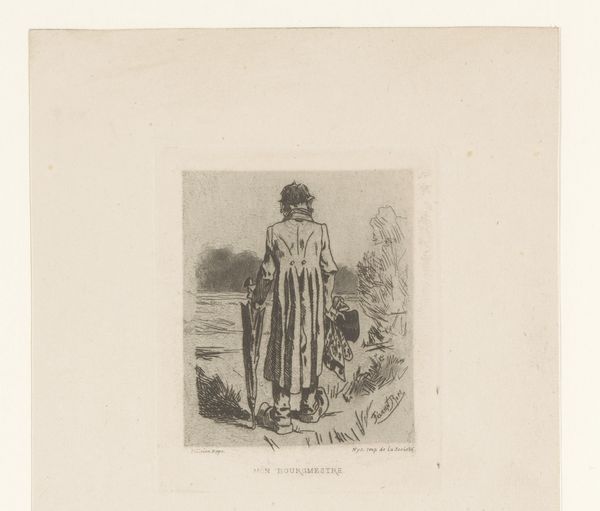
print, etching, paper
#
portrait
#
ink paper printed
# print
#
etching
#
pencil sketch
#
landscape
#
paper
#
romanticism
#
genre-painting
Dimensions: height 277 mm, width 197 mm
Copyright: Rijks Museum: Open Domain
Curator: Our next stop presents "Jonge Kevervanger," or "Young Beetle Catcher," an etching on paper by Paul Gavarni, dating from 1833 to 1834. Editor: There's an undeniable melancholy about this print. It’s the overcast sky, the slightly hunched posture of the boy… Even the landscape seems muted, reflecting his world. Curator: Gavarni was deeply invested in depicting the lives of ordinary Parisians, especially working-class children. His images often carried a social commentary, addressing themes of poverty and urban life that defined Romanticism. The beetle catcher, however humble his occupation, takes centre stage in Gavarni’s observations of early 19th century street life. Editor: Yes, but let's not overlook the print itself as a material object. Etching allowed for a detailed, reproducible image, essential for wider dissemination, creating an easily portable item. You could purchase Gavarni's observations relatively cheaply, consuming both the image and, with it, his vision of the era. It is very clearly printed, not unique. Curator: Absolutely, the etching medium enabled Gavarni to circulate his social observations to a broad audience, impacting the way people perceived the margins of their society. These printed sheets allowed a burgeoning media to impact societal issues, raising the public’s understanding. Editor: But there's something poignant in its making too, wouldn’t you agree? Each line etched into the plate, translated into an endless flow of the "Young Beetle Catcher," becoming at once commonplace but also reflective of artisanal techniques becoming swept away during industrial transformations. It feels delicate, and I wonder at how these lines affect us as observers. Curator: And seeing it here, at the Rijksmuseum, gives it new significance – it highlights the importance of understanding artworks, no matter how humble, as key records of our social fabric and societal progress. Editor: Yes, a testament to art's evolving place in cultural memory.
Comments
No comments
Be the first to comment and join the conversation on the ultimate creative platform.
